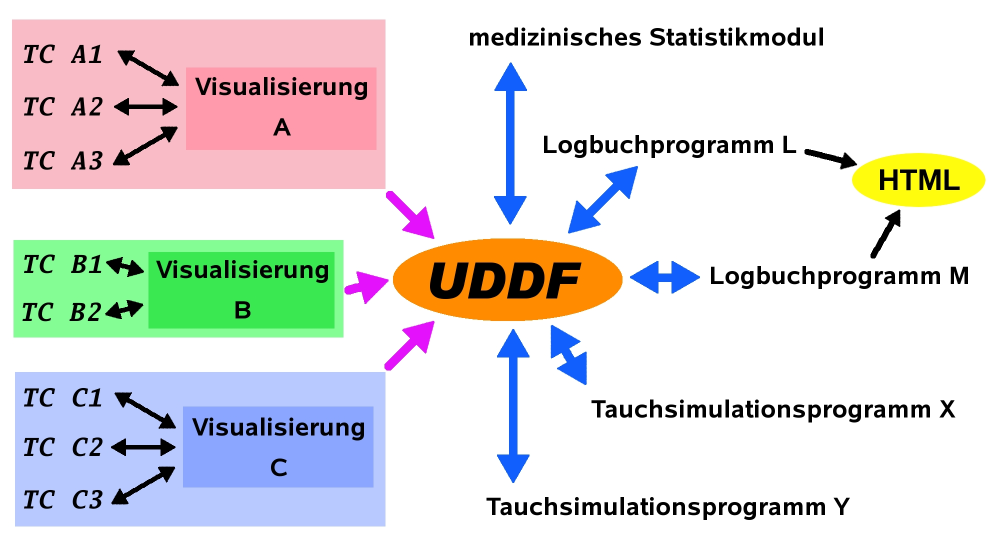Table of Contents
The invention of UDDF eliminates all above mentioned weaknesses of the other formats spread so far and standardizes data exchange between different programs — across operating system boundaries, too.
UDDF provides a powerful language with which it is possible to bring together recorded dive profiles as well as planned, or simulated dives respectively, as well as keeping an electronic logbook, but also generated (special) decompression tables, for all varieties of diving — apnoe, scuba diving, technical diving, cavern diving etc. For this UDDF encompasses sections and elements for the management of personal data, information about dive buddies, equipment, dive trips, and dive sites. Additionally, cross references to (external) images, internet sites and so on can be included.
Furthermore, many elements were taken over in UDDF from the previously developed UDCF for the section concerning the storing of dive profile data. UDCF served to make dive profiles of different dive computers, and dive simulation programs respectively, interchangeable as easy as possible. After conversion into UDCF it was possible to analyse and utilize "real" dive profiles recorded by any dive computers on all computer systems and/or to recalculate the dives using different decompression models, or different parameters respectively. Nevertheless, UDCF had some weaknesses concerning XML conformity.
With invention of UDDF, UDCF should not be used any longer.
As well UDGF (Universal Dive Generation Format) (Raimundo F. Diez, unpublished), which originally was intended to be kept independent, was incorporated in UDDF. UDGF standardized the generation of decompression tables. In the age of dive computers it can be desirable, or moreover important, to calculate a "personal" decompression table, too. In the field of technical diving this is compulsory.
Using the Universal Dive Data Format it is possible for the first time, to make all coming up dive data — planning, logging, analysing of dives (apnoe, rebreathers, open systems, all conceivable breathing gases) — regardless of manufacturer or operating system, interchangeable. Illustration 1 visualizes these facts.
UDDF is an open format and is permanently enlarged. It is desirable to add new sections in the furure to enhance UDDF's areas of application (capturing of examination data from equipment checks, archeological data e.g.). To accomplish this aim, all persons, and companies/manufacturers are invited to contribute to the further development. Through this a maximum of flexibility and a state-of-the-art format is ensured, a quick reaction on scientific and technological new developments is possible.
UDDF can be used free. The aim of the developers is to establish UDDF world wide as the standard data exchange format for all kinds of coming up dive data.
